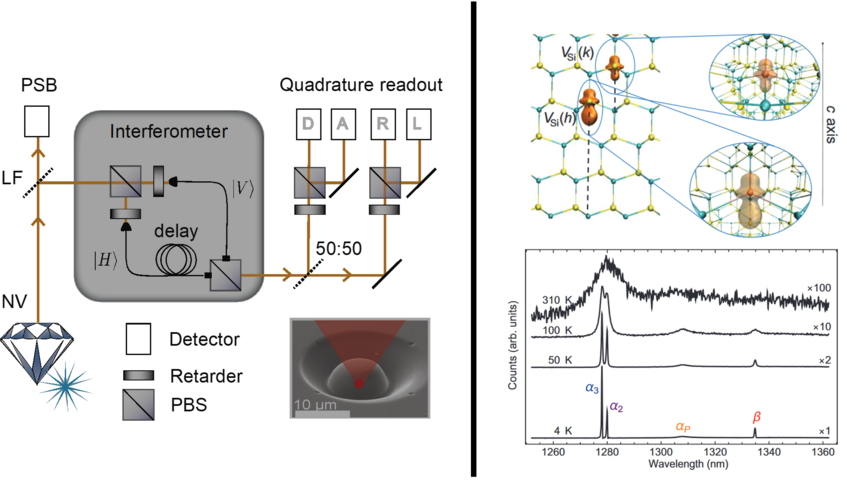High-Finesse Microcavities
Optical micro-resonators enable enhanced light-matter interaction. This powerful tool has applications in quantum information and communication by enabling high-fidelity spin-photon interfaces, as well as in the interaction with nanoparticles and many other material systems. We have developed scalable arrays of cavities with extremely high finesse and small mode volume (see middle panel below, © 2019 Springer Nature, leading to large enhancement values for all applications. We have furthermore demonstrated tunable microcavity arrays (see left and right panels below, © 2014 OSA), in collaboration with the Microsystems Technology division at the Institute for Sensors and Actuators (ISAS) at TU Wien, by integrating individual micro-electro-mechanical (MEMS) actuation at each microcavity site.

Spin-Photon entanglement
Quantum communication and quantum computation will require large numbers of entangled particles to reach practical relevance. Our path towards this goal is to use photons as mediators between spin qubits in crystals. As a first demonstration, we have shown entanglement between an electronic spin (nitrogen-vacancy centre in diamond) and a photon, where we have entangled the spin degree of freedom with a robust, time-based qubit made of light - a single photon (see left panel below). The time degree of freedom is first converted into a path mode, so that the photon travels in a superposition of different locations. It is then transformed into a polarization qubit at the final stage before detection, enabling complete tomography and a proof of entanglement.
The performance of this device can be further increased by using an electronic spin with a more favourable transition in the near-infrared optical spectrum. There, the scattering due to imperfections of the optical components is greatly reduced, so that long-distance transport of quantum information becomes possible. We are therefore investigating the properties of vanadium in silicon carbide. This spin centre offers similar features as diamond colour centres, but in a technologically advantageous wavelength range between 1280 nm and 1340 nm, i.e. within the telecom O-band (see right panel below,© 2019 American Physical Society).
Further, dramatic improvements will be achieved by enhancing the light-matter interaction with optical microcavities (see above).

